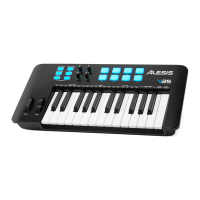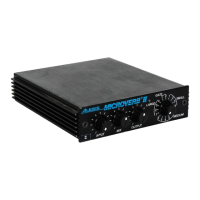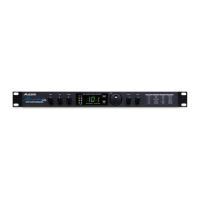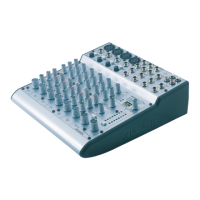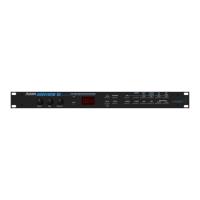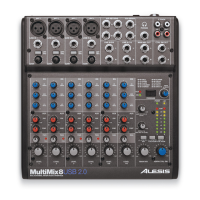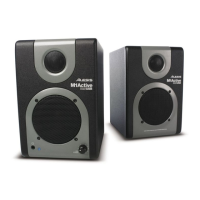Chapter 5
ALESIS ML-9600 REFERENCE MANUAL 25
DIGITAL SIGNAL PROCESSING
5.1 OVERVIEW
The ML-9600 has a very powerful built-in Digital Signal Processor that can, if desired, make changes to
your music after it has been recorded. These changes are usually made to balance the frequency content
(Equalization) of a song, or to "smooth out" very dynamic music (Compression and Peak Limiting), or
to maximize the signal so that it uses up all of the dynamic range available (Normalizing). The ML-9600
can perform any or all of these signal processing functions to your music.
The TRACK DSP button allows you to choose different processing algorithms for your music. Pressing
the TRACK DSP button cycles through the four algorithms listed below:
Screen Name DSP
Function
Comments
DSP1: Cmpress Compressor Single-band, threshold, ratio, makeup gain, attack,
release, key select, soft/hard knee, RMS or peak
detect
DSP2:EQ Parametric
Equalizer
3-band, fully parametric EQ. +/-18dB boost/cut, 20-
20KHz frequency range, adjustable Q, high/low
shelving
DSP3: Limiter Look-ahead
Peak Limiter
Output level, Limit threshold, release.
DSP4: Normliz Normalizer Current gain multiplier
DSP5:DSP Copy Copy DSP
parameters
Copies all DSP parameters of current song to DSP
buffer
DSP6:DSP Paste Paste DSP
paramters
Pastes DSP parameters from DSP buffer to current
song
DSP7:DSP Reset Reset DSP
parameters
Resets current song’s DSP parameters to default
values
DSP8:DSP Render Render DSP Renders DSP settings to audio file
Table 5.1.1
DSP Overview Table
All DSP in the ML-9600 is applied in real-time, allowing you to make changes to the DSP without
affecting the original audio recorded to disk. DSP is applied when either a Red Book or CD24 CD is
created, so the resulting tracks on the CDs will have DSP permanently applied; however, this will not
change the Audio Files on the hard disk.
DSP is applied on a Track-by-Track basis. This means that you can have Tracks that point to the same
Audio File in multiple playlists (or multiple Tracks in the same playlist) and apply different DSP to
each Track. For instance, if you wanted to create a CD containing the same song with three different
types of equalization, you could accomplish that by creating three Tracks that pointed to the same
Audio File (by using Audio File move) and EQ them differently.
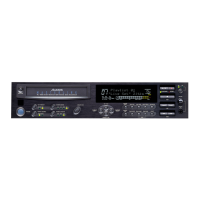
